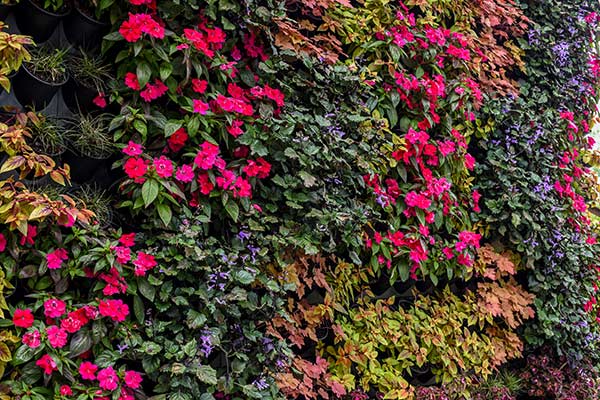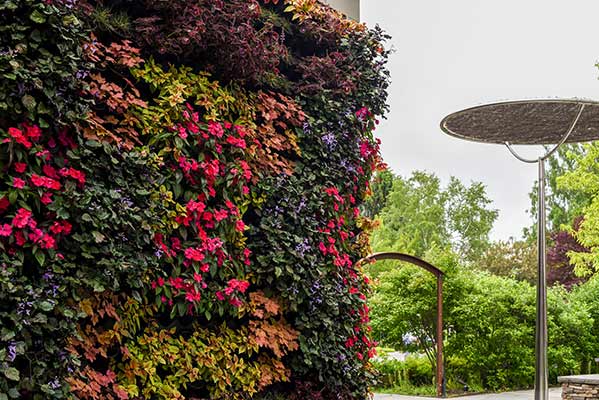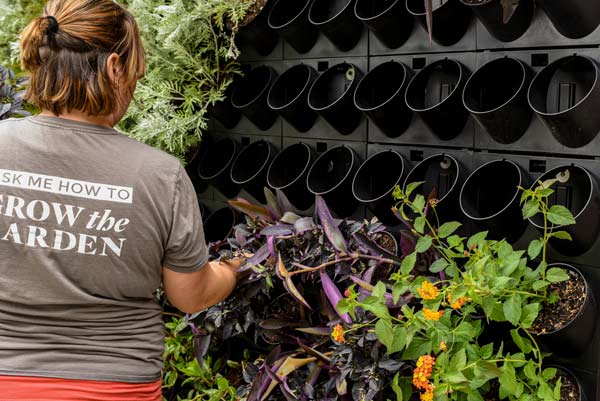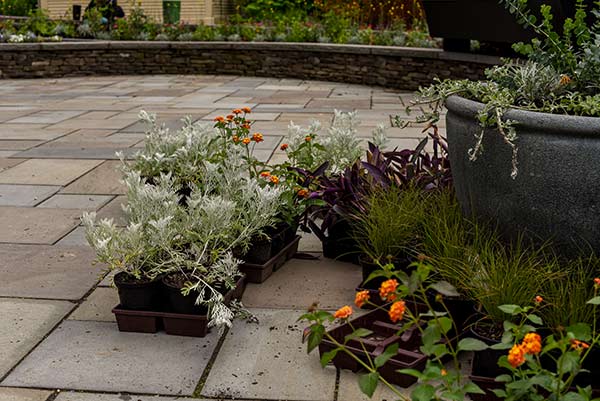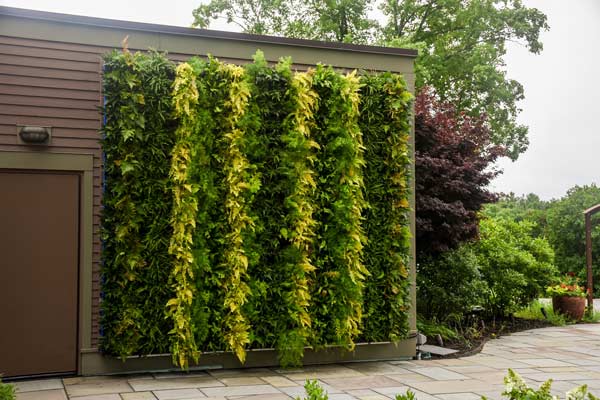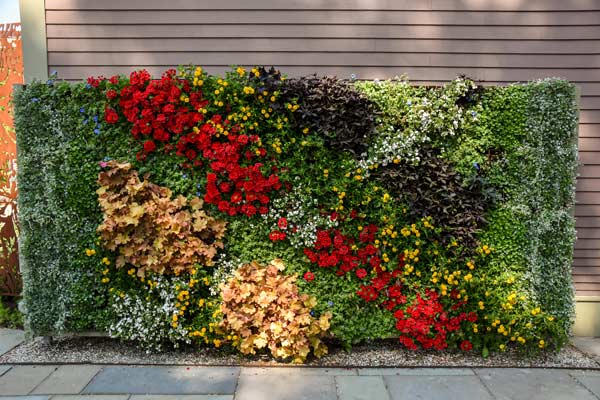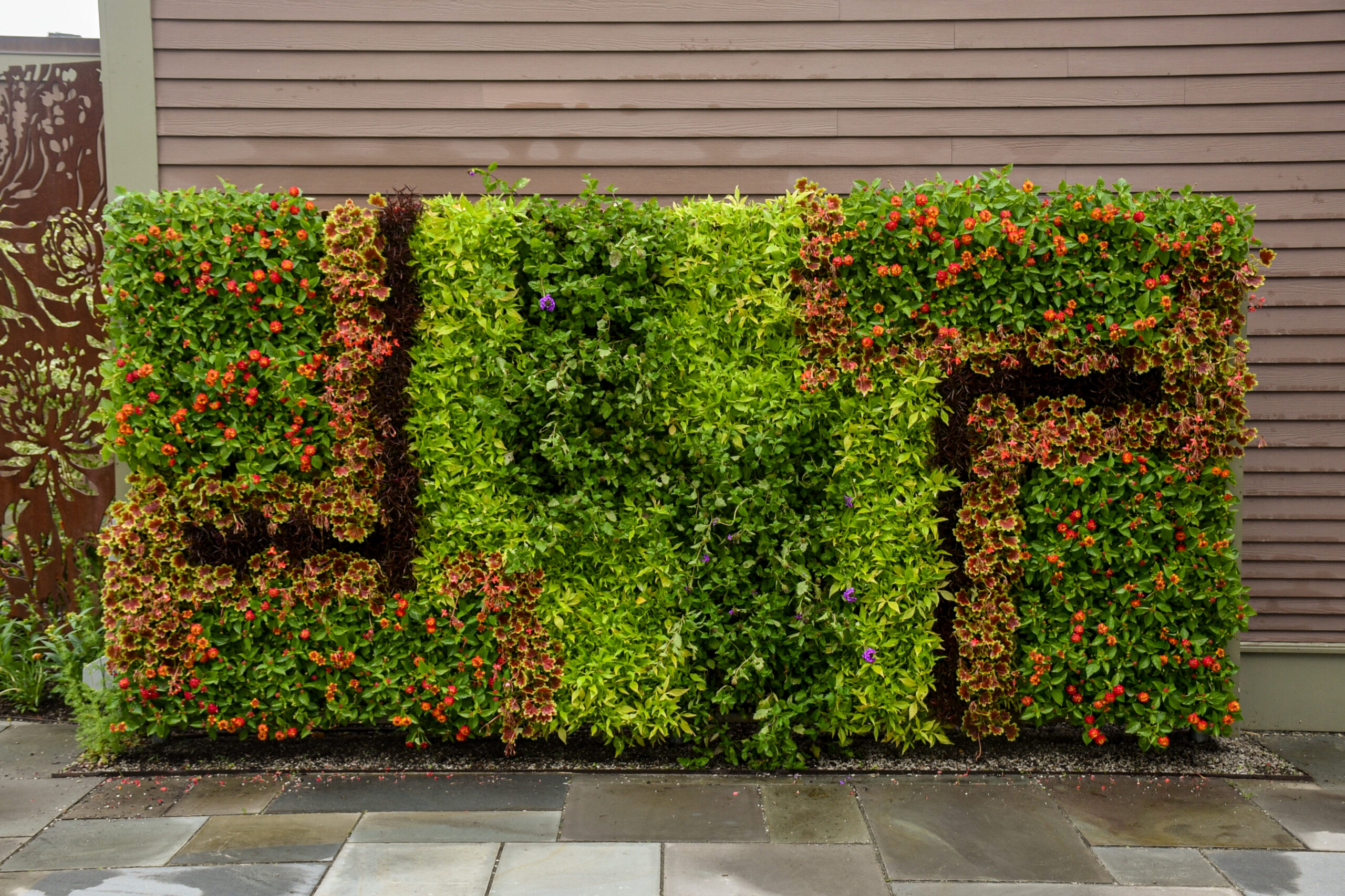LIVING WALLS
Sometimes called green walls or vertical gardens, living walls bring vegetation to built environments. Though designed to appear seamless, living walls are often constructed out of hundreds of individual modules each holding a single plant. When attached to building exteriors, these living mosaics add beauty to their surroundings while also providing important ecosystem services. Living walls can improve air quality, help to lower building temperatures, and protect from heavy rainfall. In urban settings, living walls also offer potential to support biodiversity by providing resources for insects and birds.
The Court: A Garden Within Reach features New England Botanic Garden’s two seasonal living wall displays. The walls, which get installed with plants in early summer, sit on opposite ends of this garden space, one in full sun and the other in shade. Plants are chosen not only for their exposure tolerance but also for features like attractive foliage, flowers, intriguing textures, and ability to hold interest over many weeks. As highlights in a universally accessible garden designed to create sensory experiences, both living walls feature blocks of color and repeating patterns to be more visually pleasing to visitors with minor visual impairments.
How do you take care of the plants?
Each living wall has a drip irrigation system attached to watering timers that can be manually turned on to water the walls. The horticulture team can also tie in a mobile fertilizer tank to feed the plants throughout the season. Pruning, deadheading, and occasional plant replacement also happen throughout the growing season to make sure the living walls stay looking their best.
How do you design the walls?
The living wall modules are installed as a set grid pattern that never changes. The design process involves choosing a color palette for the walls that integrates with the rest of The Court. Once a palette is chosen, the horticulture team looks at available plants and starts thinking about combinations. Because this is a seasonal display, they have the option to use herbaceous annuals, tropicals, and/or perennials. The team considers how the plants play together visually in terms of color, texture, and pattern. Plant habits—how a plant will grow and change—are an important consideration when designing living walls to avoid cascading plants covering up more upright neighboring plants below them.
How many plants are incorporated into each wall?
The shade wall has space for 408 plants. In past years, the sun wall contained 608 plants.
How long are the walls on display?
The Garden’s living walls are on display from June to September
- Plectranthus × ‘Velvet Elvis’
- Impatiens × Bounce™ ‘Cherry’
- Carex morrowii var. temnolepsis ‘Silk Tassel’
- Coleus ‘Trailing Rose’
- Fuchsia × autumnale
- Capsicum ‘Purple Flash’
- Senecio ‘Vira Vira’
- Coleus Fancy Feathers™ ‘Copper’
- Setcreasea pallida
- Lantana ‘Miss Huff’
- Cuphea ‘Firefly’
- Carex testacea ‘Prairie Fire’
Living Wall displays in 2025
Living Wall displays throughout the years


